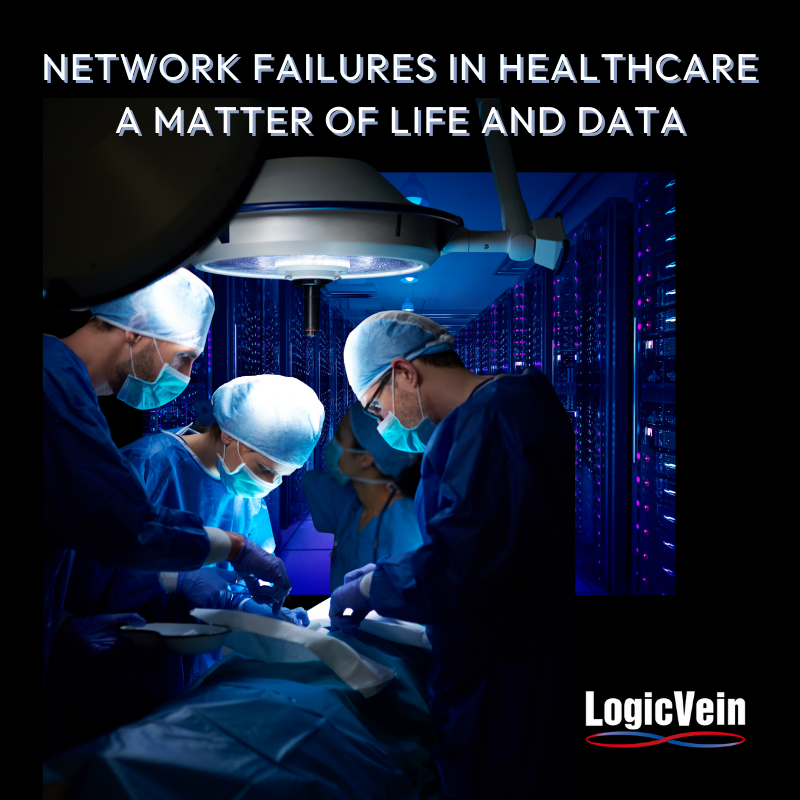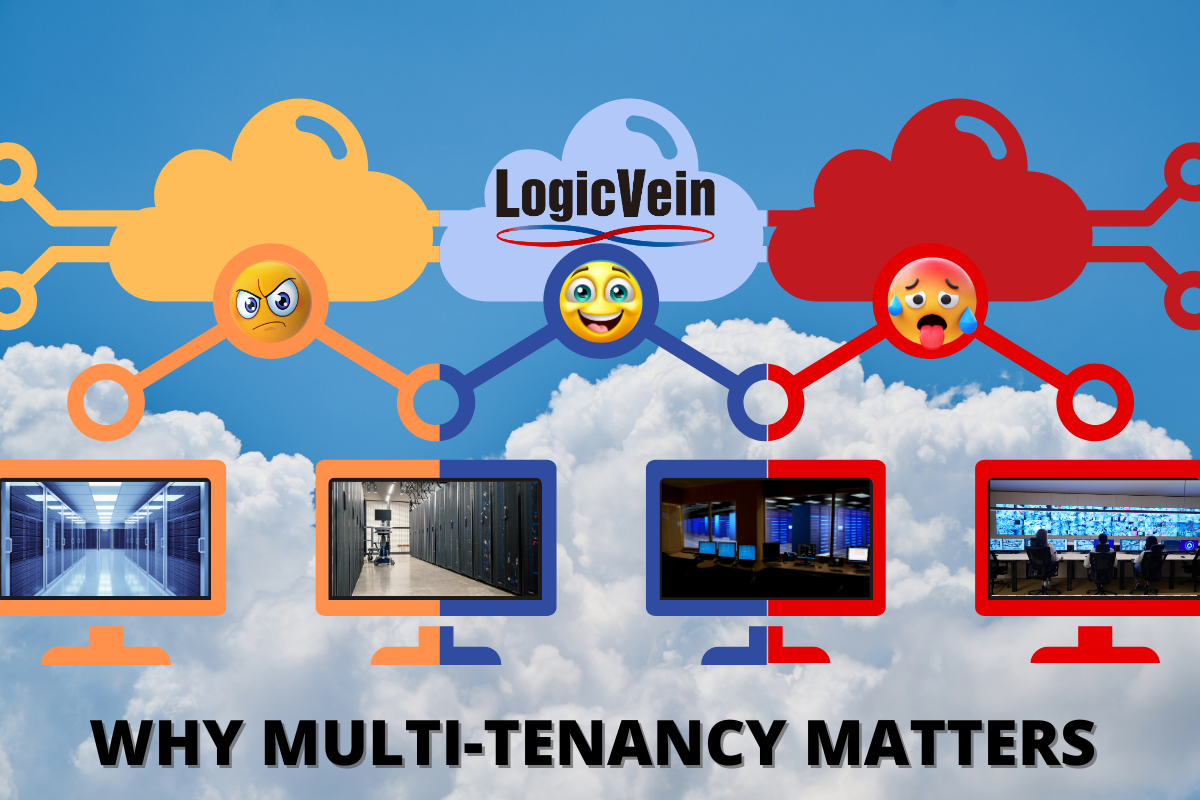Healthcare networks must aim for near 100% uptime to support life-critical medical applications. Even brief outages can disrupt critical care and put patients at risk.
Imagine this: You’re in the middle of a critical procedure, relying on real-time imaging or patient monitoring systems, and suddenly, the network goes down. For a healthcare professional, this isn’t just a frustrating inconvenience—it could be a life-or-death situation. That’s why healthcare networks have to operate at a much higher standard than typical business networks.
Higher Performance Standards
Healthcare-related networks must operate to a higher standard than typical business networks, with additional safeguards in place to ensure reliability and protect patient safety.
First off, these networks need to be rock-solid. We’re talking nearly 100% uptime because they support life-critical applications, such as electronic health records (EHRs), diagnostic tools, and telemedicine services. A single hiccup in performance could delay care or compromise patient safety. That’s why healthcare networks aim for what’s called "three nines" or "four nines" availability—meaning they’re operational 99.9% or even 99.99% of the time. And it’s not just about staying online; they also need to deliver consistent performance, ensuring there’s no lag or dropped data when it matters most.
Key Differences Between Healthcare And Business Class Networks:
Healthcare networks are designed with unique considerations compared to typical business-class networks due to the critical nature of patient care and the sensitivity of medical data. As we delve deeper into the critical nature of healthcare networks, it's essential to understand the common causes of network failures.
Issues aren't just technical hiccups; they're potential threats to patient care and data integrity. From aging infrastructure to the unique challenges posed by medical environments, healthcare IT teams face a complex array of potential failure points. By identifying these common causes, we can gain a deeper understanding of the multifaceted approach required to maintain robust and reliable networks in healthcare settings.
Let's explore the primary factors that can lead to network failures, each of which underscores the delicate balance between technology and patient care in modern healthcare facilities.
Performance and Reliability
- Mission-Critical Functionality: Healthcare networks must operate with near-perfect uptime to support life-critical applications, such as electronic health records (EHRs), diagnostic tools, and telemedicine. Downtime can directly impact patient safety
- Redundancy: These networks often include multiple pathways, backup systems, and failover mechanisms to ensure uninterrupted service, even in the event of a failure.
- Scalability: Healthcare networks are designed to handle future growth without disrupting operations, accommodating advancements in medical technology, and supporting increased patient volumes.
Security and Privacy
- Data Protection: Healthcare networks must adhere to stringent regulations, such as HIPAA, which require robust encryption, access controls, and cybersecurity measures to safeguard sensitive patient information.
- Infection Control: Cabling and infrastructure design must comply with infection control requirements, limiting technician access and ensuring clean environments.
Complexity of Design
- Specialized Work Areas: Unlike standard business spaces, healthcare facilities have diverse work areas (e.g., surgery rooms, diagnostic labs) with tailored network requirements for density and connectivity.
- Interoperability: Integrating medical devices, legacy systems, and modern technologies is crucial for seamless communication among departments and healthcare providers.
Operational Efficiency
- Real-Time Data Access: Networks enable instant access to patient data, facilitating more accurate diagnoses and effective treatment plans.
- Disaster Recovery: Healthcare networks require detailed disaster recovery plans to restore operations during emergencies quickly.
Additional Safeguards
But reliability, security, data protection, and all that is only part of the story. Healthcare networks are built with extra safeguards to make sure they don’t fail when you need them most. For example, redundancy is key—there are often backup systems and failover mechanisms in place, so that if one component fails, another takes over seamlessly. And if something does go wrong, quick recovery is critical. These networks are designed to minimize downtime and recover quickly.
Then there’s security. Patient data is incredibly sensitive, and protecting it’s not optional—it’s required by laws such as HIPAA. That means healthcare networks need stronger cybersecurity measures than most businesses to guard against breaches and ensure compliance.
Ultimately, disaster recovery plans are essential. Whether it’s a natural disaster or a cyberattack, healthcare organizations need well-practiced strategies to restore operations and maintain uninterrupted patient care quickly.
ThirdEye Suite Offers Key Advantages For Healthcare Networks Through Automation:
-
Enhanced Network Visibility: Provides real-time insights into network performance, helping IT teams quickly identify and resolve issues before they impact patient care.
-
Improved Operational Efficiency: Automates routine administrative tasks, such as scheduling, billing, and patient record management, thereby reducing bottlenecks and ensuring smooth workflows.
-
Compliance Management: Enforces compliance with regulations, such as HIPAA, thereby reducing the likelihood of breaches or penalties.
-
Configuration Management: Enables administrators to back up, compare, and restore device configurations, ensuring that changes are correctly tracked and can be quickly rolled back if issues arise.
-
Security Enhancement: Implements robust security measures, including encryption and role-based access controls, to protect sensitive patient data.
-
Automated Alerts and Monitoring: Sets up custom alerts and monitoring thresholds to proactively address potential network issues.
-
Seamless Integration: Supports multi-vendor environments and integrates with existing healthcare IT systems, providing a unified view of the network.
-
Scalability: Easily adapts to growing healthcare networks with features like automated device discovery and standardized monitoring configurations.
-
Disaster Recovery Support: Maintains up-to-date network documentation and configuration backups, which are crucial for quick recovery in the event of failures.
-
Customizable Dashboard: See what you need to see when you need to see it, all on a single screen.
These automation tools help healthcare organizations maintain a secure, reliable, and efficient IT infrastructure, allowing them to focus on delivering high-quality patient care.
Read More About Enhancing Healthcare IT Infrastructure with LogicVein
In Summary
Healthcare networks face unique challenges that require specialized network management solutions. ThirdEye Suite offers a comprehensive set of features designed to address these challenges, enabling healthcare organizations to maintain highly reliable, secure, and performant networks that support modern patient care.
Healthcare networks prioritize reliability, security, and scalability far beyond what is typically required in business settings because lives depend on their performance. Healthcare networks don’t just connect devices—they’re the backbone of modern medicine. They’re built to be reliable, secure, and resilient because lives depend on them every single day.
These higher standards and additional safeguards are crucial in healthcare networks to ensure patient safety, maintain the integrity of medical data, and provide uninterrupted access to critical healthcare services. Download the Whitepaper




